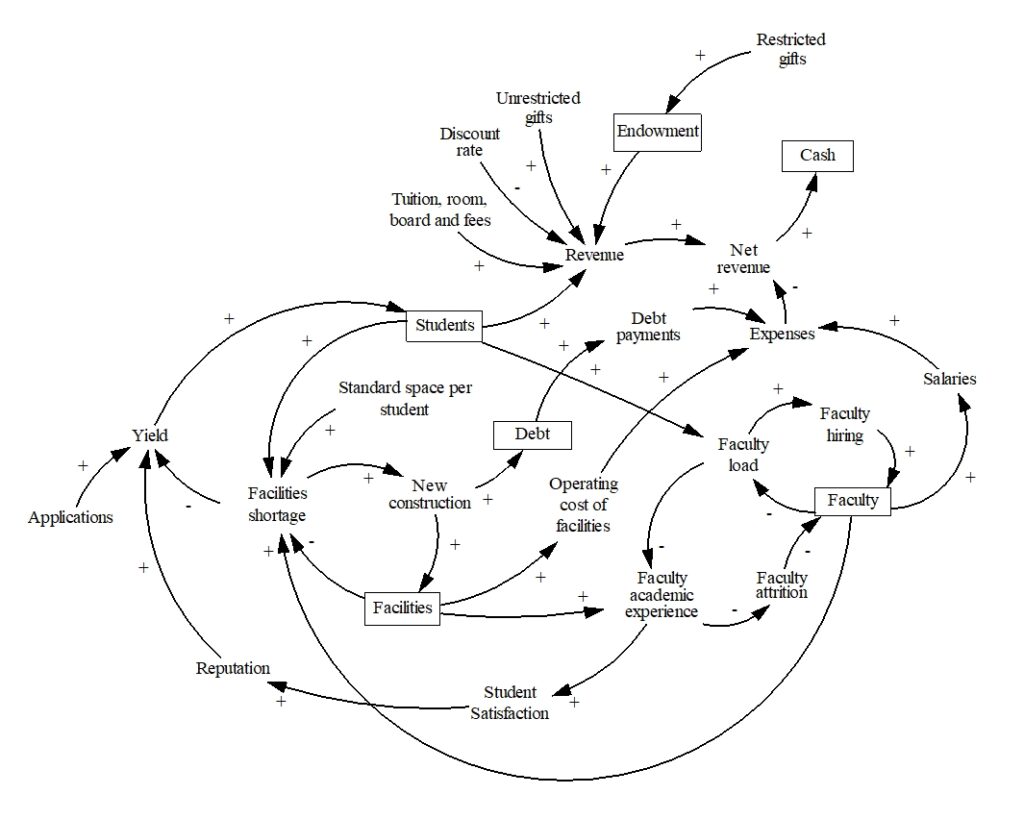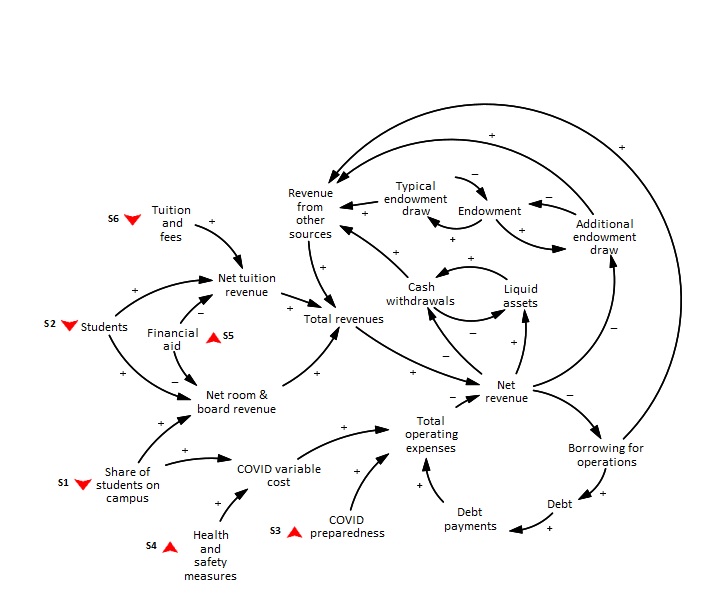The effect of declining enrollments on colleges
The approaching decline in the U.S. college-age population, sometimes referred to as a “demographic storm,” has been identified as an existential threat to the future of American colleges and universities. This article conducts a model-driven analysis of three plausible college-level responses to declining applications. It draws on systems theory to conceptualize a tuition-dependent college as a complex service system and to develop a system dynamics model that captures key causal interrelationships and multiple feedback effects between faculty, facilities, tuition revenue, financials, reputation, and outcomes. Simulations with the college model suggest that common solutions such as reducing faculty or adding campus facilities may improve the college’s short-term financial position, but they are insufficient to ensure the long-term viability without the continuous tuition hikes. This model contributes to the research literature on the economics of higher education, and model-driven academic management and strategy. It also provides useful implications and insights that can inform policy-makers and college leaders.

Causal structure of the college model. The model has six stocks, shown as rectangles. It captures the many causal and feedback effects between elements of a representative tuition-based college, which include faculty, facilities, tuition revenue, endowment, debt, reputation, and educational outcomes. This model tracks numerous simultaneous effects triggered by the external operating environment and by the management decisions.
Publications:
Pavlov O.V. and E. Katsamakas. “Will colleges survive the storm of declining enrollments? A computational model.” PLoS ONE, 15(8), 2020: e0236872.
Ginzberg M. and O. Pavlov. “Dynamic Modeling for Higher Education Planning.” Optimal Insights. June 29, 2020.
The effect of COVID-19 on college finances
The COVID-19 pandemic has had a significant impact on higher education. Steering academic institutions through the pandemic is a complex and multifaceted task that can be supported with model-based scenario analysis. This article studies the short-term and long-term effects of the pandemic on the financial health of a college using scenario analysis and stress testing with a system dynamics model of a representative tuition-dependent college. We find that different combinations of the pandemic mitigation protocols have varying effects on the financial sustainability of an academic institution. By simulating six individual components of the COVID-19 shock, we learn that due to the causal complexity, nonlinear responses and delays in the system, the negative shocks can propagate widely through the college, sometimes with considerable delays and disproportionate effects. Scenario analysis shows that some pandemic mitigation choices may destabilize even financially healthy institutions. The article concludes that higher education needs new sustainable business models.

Six components of the COVID-19 shock and their impact on a college.
S1: Fewer students on campus; S2: Lower enrollments; S3: COVID-19 preparedness of the campus; S4: Health and safety measures; S5: Greater financial need; S6: Calls to reduce tuition.
Publication:
Pavlov, O. and E. Katsamakas. “COVID-19 and Financial Sustainability of Academic Institutions.” Sustainability. 13 (7), 2021.